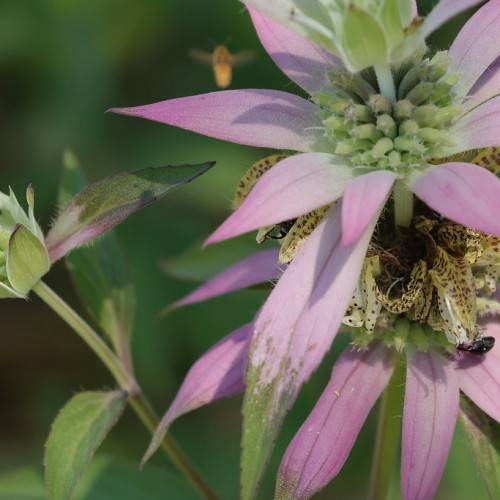
dotted beebalm
Monarda punctata
Cycle:
Herbaceous Perennial
Watering:
Minimum
Hardiness Zone:
3 - 8
Flowers:
Flowers
Sun:
Full sun,part shade
Leaf:
Yes
Growth Rate:
Low
Maintenance:
Moderate
Salt Tolerant:
Yes
Care Level:
Medium
watering
Water dotted beebalm (Monarda punctata) regularly to keep the soil moist but not soggy. Water your plant deeply once a week in the morning. During hot and dry weather, you may need to water more frequently. The soil should be allowed to dry between waterings. During the blooming season, water your dotted beebalm more often to encourage more blooming.
sunlight
Dotted Bee Balm (Monarda punctata) thrives best in areas with full sun or partial shade. When planted in a full sun site, the plant should receive at least 6 to 8 hours of direct sunlight per day. In areas of partial shade, dotted bee balm should receive a minimum of 4 to 5 hours of direct sunlight. When grown in optimal conditions, the plant will grow to a height of more than 2 feet and will produce an abundance of brightly colored blooms in the summer and fall months.
pruning
Dotted Beebalm, also known as Monarda punctata, is a native, short-lived perennial that can reach heights of 3 to 5 feet in full sun and partial shade. Pruning should begin in late fall or early winter with the removal of up to 1-third of the previous year’s growth. This will encourage branching and more flowers during the growing season. In early spring, prune out any dead or diseased branches or stems and cut back the stems and foliage to the desired height. In the summer, it may be necessary to deadhead the blooms if you wish to keep the plant looking neat and to encourage further blooming. After the initial pruning in the fall, a light shearing once or twice during the summer will keep the plants full and encourage more flowering. For best results, make sure to remove dead and diseased material when pruning.
